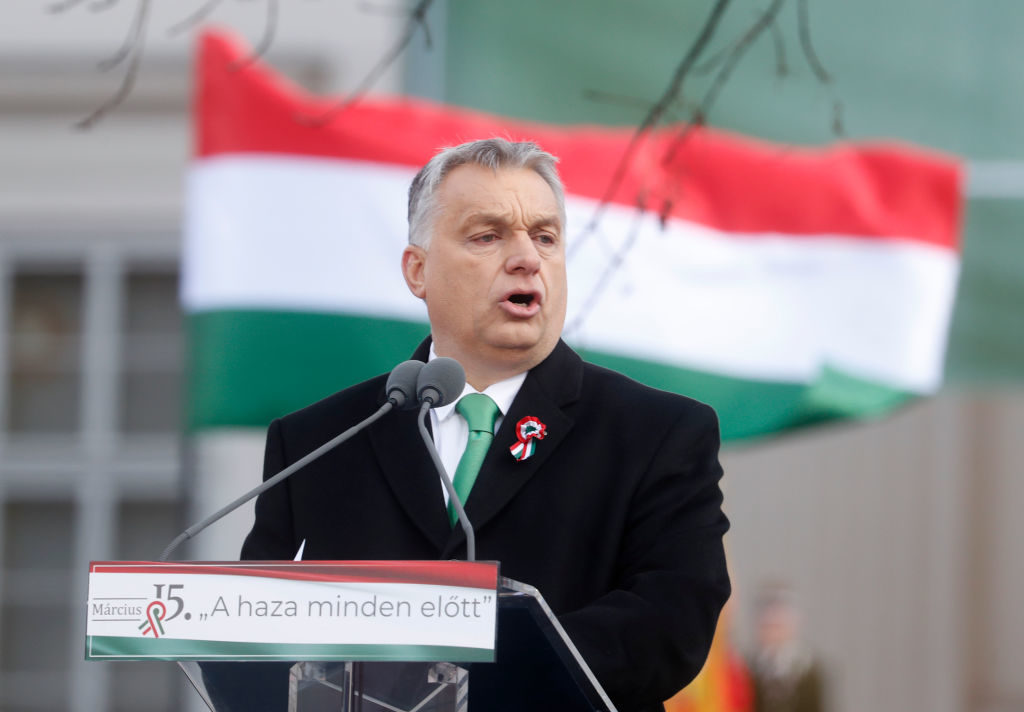Politics
Budapest’s Green Mayor Halts Construction on the City’s $277 Million National Gallery Due to Environmental Concerns
The proposed museum stands at the center of a major cultural development plan in Budapest’s City Park.

The proposed museum stands at the center of a major cultural development plan in Budapest’s City Park.

The recently elected mayor of Budapest has put a halt to the construction of Hungary’s new National Gallery, claiming the project will have an “enormous impact on its environment.” At a moment when the art world—not to mention the world at large—is coming to grips with the climate crisis and its own role in perpetuating it, the announcement marks what is likely the first time that climate concerns have scuppered a major cultural project.
Gergely Karácsony, a Green Party leader who was elected mayor of the capital city in October, has been vocal in his opposition to the $277 million (€250 million) museum, which was due to be built on “one of Budapest’s few and very precious green areas.” The National Gallery “is such a monumental building that it would have an enormous impact on its environment,” he said, according to The Art Newspaper.
On November 5, the General Assembly of Budapest backed Karácsony, voting to suspend construction on the state-funded gallery, which was due to begin early next year. Work on the House of Hungarian Innovation, a new $110 million (€100 million) museum of science, has also been paused.
Developed under the previous mayoral regime of István Tarlós, the National Gallery has been billed as one of the centerpieces of the rapidly-developing Liget cultural district in Budapest’s City Park. Other institutions planned for the area, which is slated to be fully complete by 2023, including the Museum of Ethnography, the House of Hungarian Music, and an expanded city zoo. The National Museum Restoration and Storage Centre, a $77 million (€70 million) storage and research facility that houses some 300,000 cultural objects, opened to the public in May of this year.

Hungarian Prime Minister Viktor Orban delivers a speech in front of the National Museum during Hungary’s National Day celebrations on March 15, 2019 in Budapest. Photo: Laszlo Balogh/Getty Images.
Leading the Liget project since its inception is László Baán, the director of Budapest’s Museum of Fine Arts. After initially proposing, in 2008, that his institution merge with the National Gallery via an underground tunnel—a plan that was turned down by the state—Baán presented a new, more comprehensive idea in 2011. It entailed the renovation of the Museum of Fine Arts and the construction of a new national gallery to replace the existing institution in Buda Castle.
Baán and other Liget proponents have claimed that the new developments will displace parking lots and old buildings, and that they’ll actually increase the green space in the park by five percent.
After meeting with Karácsony last month, right-wing Hungarian prime minister Viktor Orbán agreed to listen to the mayor’s plan, even if it meant contradicting the foundation laid out by Tarlós, whose nine-year mayorship Orbán called a “golden era in the history of Budapest.”
“I had to withdraw a lot of things,” Orbán said in a public radio address following his meeting with Karácsony. “It wasn’t pleasant for us to give up dreams.”
For now, the future of broader cultural development plan remains uncertain. “The Hungarian government continues to remain committed to Budapest projects to be implemented from state funds, provided that there is a consensus between the government and the metropolitan municipality regarding their realization,” a representative from the Hungarian government told Artnet News in a statement.
“The government is open to conducting a normal dialogue with the capital in the spirit of fair partnership,” the representative continued, noting a willingness to engage in talks “once the capital decides what it wants.”